Is their crossroads cuisine ‘the next big thing’? Uyghurs hope so
By Maura Judkis
March 6 2017
Uyghur people are “really hospitable,” said Erkinay Abliz. So that’s why, when a recent visitor to her brother-in-law’s Cleveland Park restaurant, Dolan Uyghur, struggled to pull a piece of lamb off a nearly sword-length skewer, Abliz picked up her own kebab and bit the meat directly off the metal. “This is how we eat,” she said with a smile that put her visitor at ease.
It won’t be long before more of the Washington area knows how the Uyghurs eat. Expats from the ethnic group, which hails from Western China and central Asia, have opened three restaurants in the region specializing in their cuisine in the past year and a half, and Uyghur dishes have popped up on other menusacross town. There are — believe it or not — about as many restaurants serving Uyghur food in the Washington area as there are in New York.
“Uyghur food is going to be the next big thing in the United States,” said Yimamu Maimaiti, a partner in Crystal City’s Queen Amannisa, the first Uyghur restaurant to open in the region. “Uyghur food is going to be in every corner in the world.”
But first, Americans have to learn how to pronounce it. Say it now: WEE-grr. Uyghurs are among the more than 50 ethnic minority groups in China, and many hail from the westernmost autonomous region of Xinjiang, which was traversed via the Silk Road. Uyghur culture reflects this crossroads, and it is distinct from mainstream Han Chinese culture, particularly because Uyghurs are Muslim and speak their own Turkic language, also called Uyghur.
Similarly, their food is distinct from Han Chinese food. Yes, noodles and rice are staples in both cuisines, but Uyghurs aren’t quick to concede similarities between Chinese lamian and Uyghur lagman, their most famous dish.
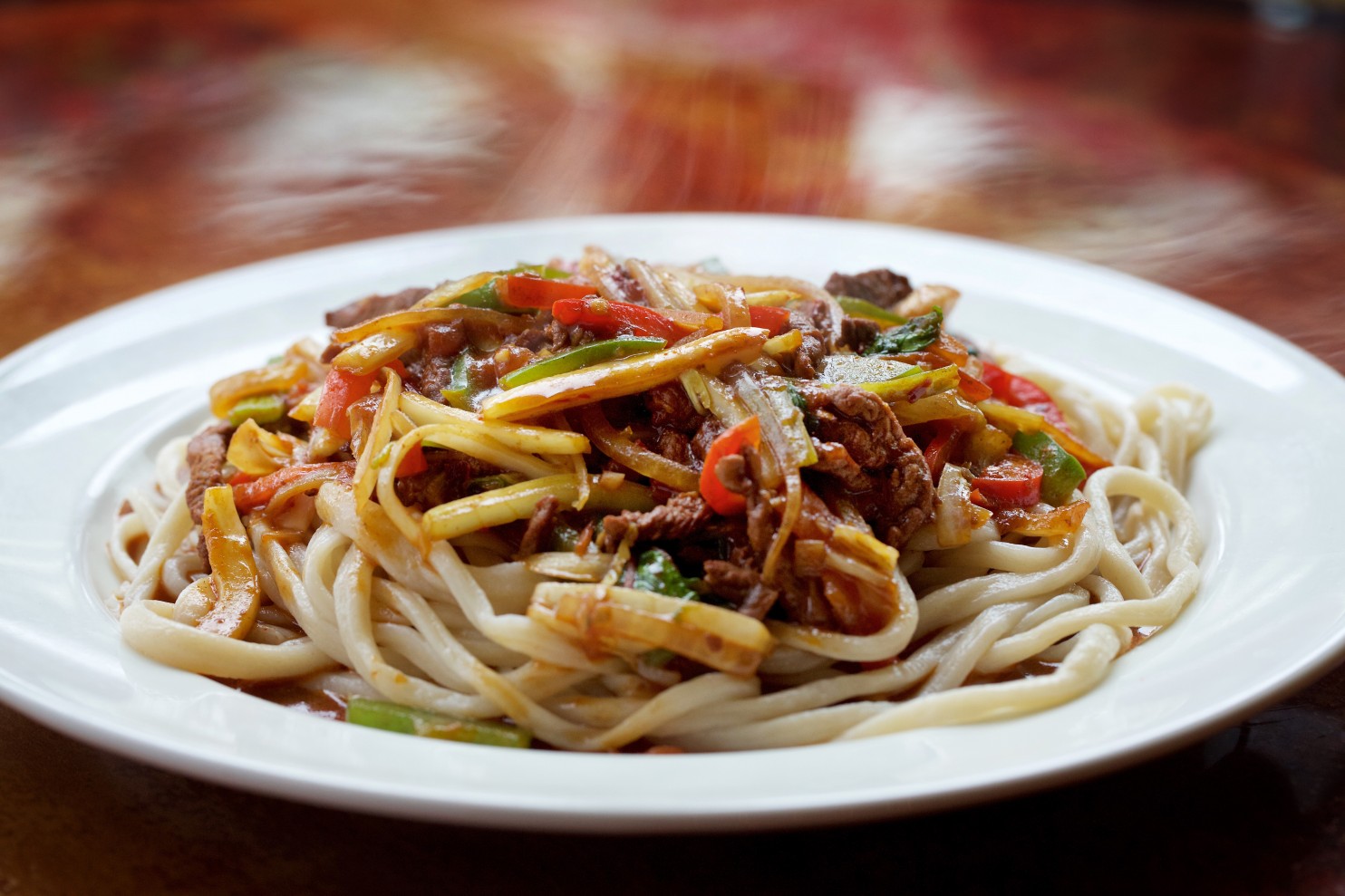
Lagman is a popular dish at Dolan Uyghur in Cleveland Park. (Deb Lindsey /For The Washington Post)
“Often with these kind of historical origins of food, there’s often, mixed in there, a lot of nationalist mythology,” said Sean Roberts, who has studied Uyghur culture extensively as an associate professor of international affairs at George Washington University. “I think when you talk about lagman there’s certainly some Chinese influence there, which most Uyghurs won’t want to acknowledge.”
[Tom Sietsema review: Dolan Uyghur]
But the flavors that accompany those noodles are more akin to Middle Eastern and Central Asian food. Cumin makes frequent appearances — like in polow, a lamb-and-rice dish you might compare to plov (or pilaf) — as do red and green peppers. Dishes can be oily, and many are mild, though a few, like Queen Amannisa’s Big Plate Chicken, a stew of chicken and potatoes, can be mouth-numbingly peppery. Naans and pies — like goshnan, stuffed with spiced ground beef and described on Dolan’s menu as a “Uyghur-style pizza” — are also characteristic.
The noodles for lagman, a beef stir-fry with green peppers and onions, are hand-pulled, dense and always a little chewy, and the same dough goes into manta, beef or pumpkin-stuffed dumplings that are traditionally served for very special guests. The length of the noodles may perplex some American diners: The goal is to have “Just one noodle” fill an entire plate, said Shadiya Ibrahim, owner and chef of Kiroran, a Uyghur restaurant in Fairfax. The longer the unbroken noodle, the more talented the chef.
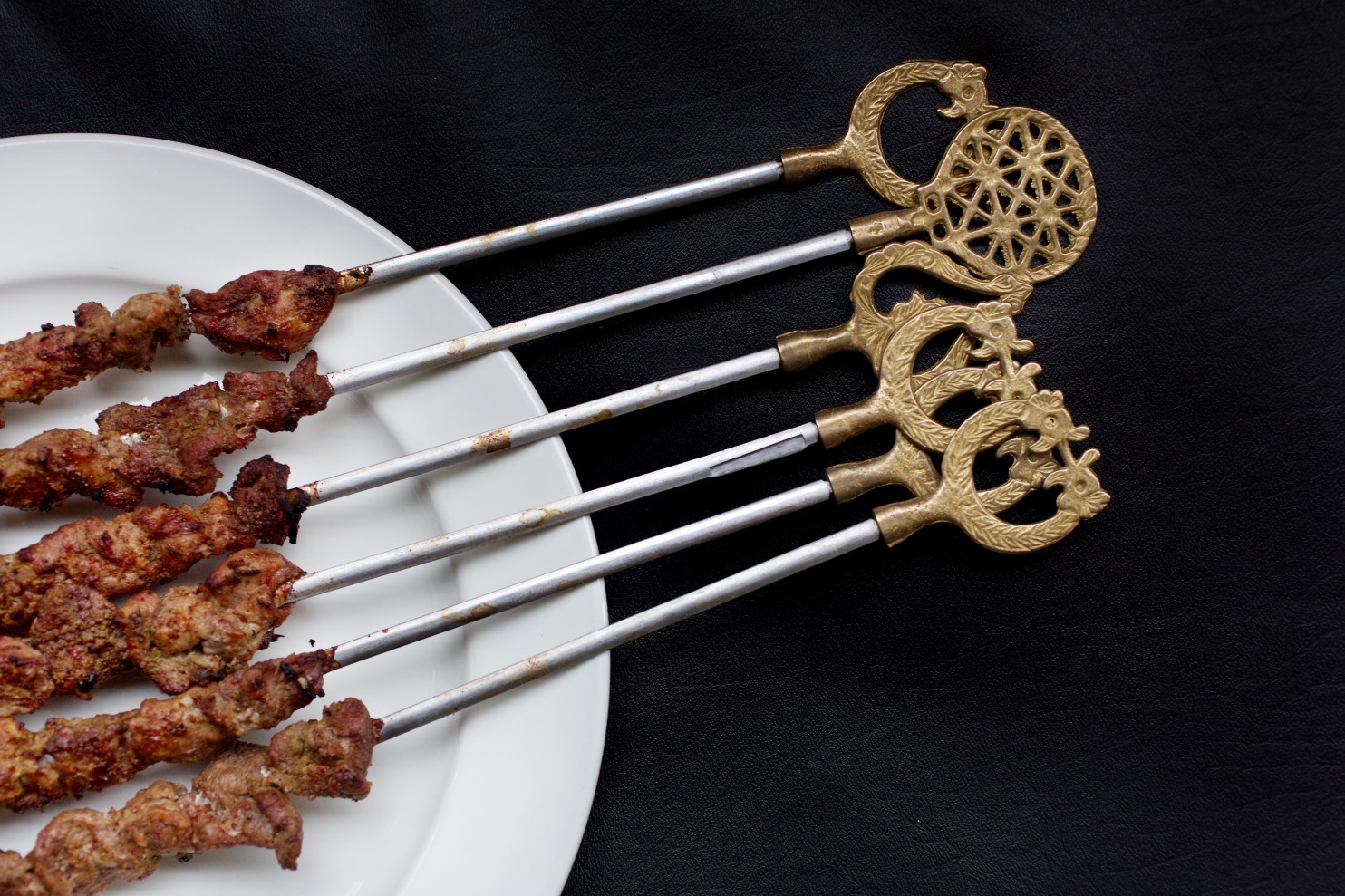
Lamb is the featured meat on the kebabs at Dolan Uyghur in Cleveland Park. (Deb Lindsey /For The Washington Post)
In Xinjiang, there is an established system of apprenticeship in which aspiring cooks train for months under an ustam, or master chef. They are almost always male. That makes Ibrahim a rarity. She went to culinary school in Xinjiang and worked at her uncle’s Uyghur restaurant in Australia before moving here to start her own restaurant, naming it after an ancient Uyghur city. Sometimes, when she goes from table to table to ask guests, some of whom may be Uyghur, how they enjoyed their meals, “They will ask me, ‘Can we see the chef?’ ” she says. When she tells them she is the chef, “They will be so surprised.”
Halal lamb, beef and chicken are the most popular proteins, but you’ll also see fish and shrimp on some menus. And even though Uyghurs are Muslim, not all of the restaurants are dry: Dolan features a full bar. It wasn’t initially in the plans, but serving alcohol was a stipulation of the lease. While it would be unusual to see a Uyghur restaurant serve alcohol in Xinjiang, “This is not for us, this is for the customers,” said Abliz. But tea, beautifully presented at each of the area’s three restaurants, is a more important part of a Uyghur meal, which will traditionally end with layer cakes made of honey and walnut.
Though the restaurants tend to use more beef than lamb, a nod to American preference, their owners say the flavors are authentic.
“We don’t want our food to get Americanized,” said Gulziba Ekber, daughter of Dolan chef Ekber Keyser.
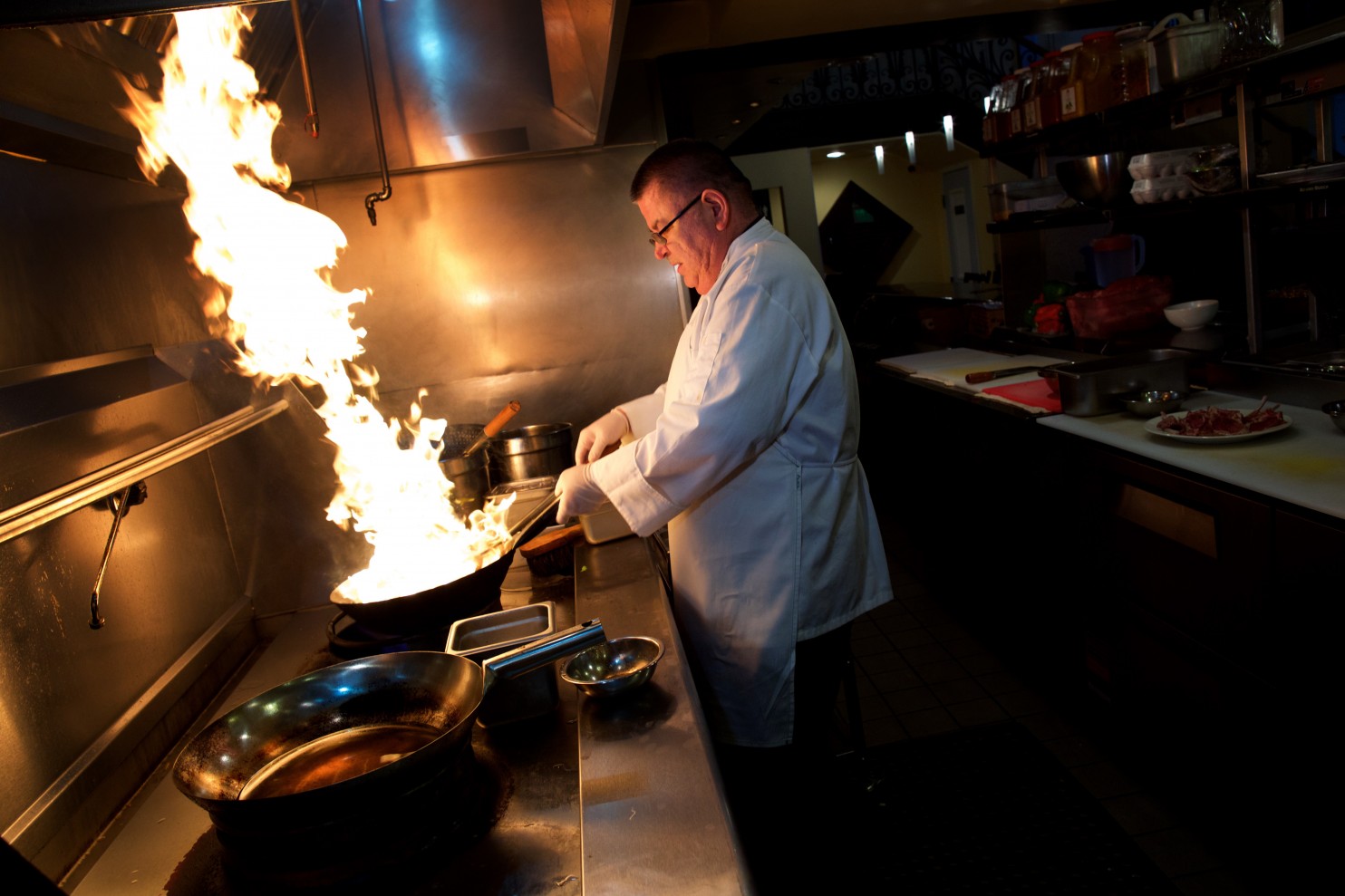
Chef Ainiwaer Abuduwayiti works at the range at Dolan Uyghur. (Deb Lindsey /For The Washington Post)
Resistance and immigration
When clueless Americans (or restaurant guides) categorize Uyghur food as Chinese, it raises the hackles of Uyghurs living in America.
“Uyghur is Uyghur and Chinese is Chinese,” said Ilshat Hassan Kokbore, president of the Uyghur American Association. “Culturally, food is part of the Uyghur identity.”
But politics are part of the Uyghur identity as well. Ask Uyghurs why they decided to settle in Washington, and the answer can be complicated. The story of their food is inextricably linked to their politics.
Uyghurs have long chafed under the rule of the Chinese government, which imposes harsh restrictions on their religious practices. Some Uyghurs advocate for a separatist movement to form a Uyghur nation, East Turkestan. It’s an uphill battle.
“They don’t have the same kind of popular culture cachet as the Tibetans, and probably less so after 9/11 because they’re Muslim,” said Roberts. “There’s no Richard Gere for the Uyghurs.”
The Chinese government has tried to tamp down any resistance. There have been protests, and China has accused some Uyghurs of terrorism for committing violent crimes, including a knife attack that left eight people dead in February. But human rights groups are critical of the government’s treatment of Uyghurs.
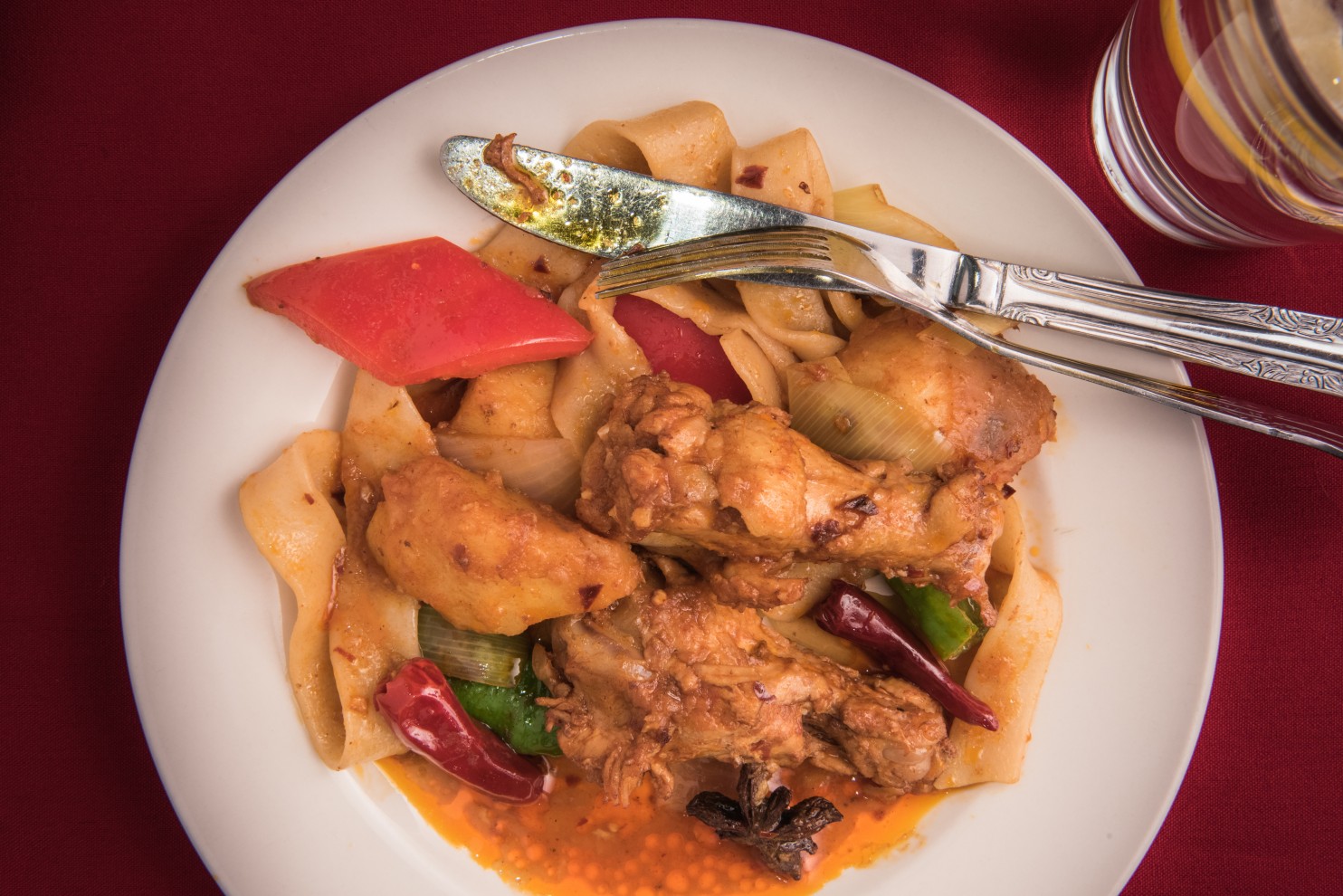
Chicken with potato and house-made noodles with spicy sauce at Queen Amannisa in Crystal City. (Dixie D. Vereen/For The Washington Post)
One leader of the Uyghur resistance movement, Rebiya Kadeer, was jailed for 5½ years in China, before she was released in 2005 and immigrated to the Washington area. Before she arrived, there was a small Uyghur community of students and young professionals, mostly in the District, Los Angeles, New York, San Francisco and Houston. Early Uyghur immigrants who came here to study weren’t interested in the restaurant industry, said Abliz and Ekber, and they weren’t sure Americans would be interested in their food, either.
But when Kadeer moved here, it accelerated the influx of Uyghurs to the region. Still, the population was small: A 2010 paper in the China and Eurasia Forum Quarterly estimated the Uyghur population in the entire United States to be 1,000 people.
A July 2009 demonstration by Uyghurs in Urumqi, the capital of Xinjiang, changed everything. A violent clash between Uyghurs and Han Chinese resulted in nearly 200 deaths (though Uyghurs claim the toll is higher), and Uyghurs who feared for their safety began to emigrate in droves. Though there isn’t an official count, the Uyghur American Association estimates that several thousand Uyghurs now live in the Washington area — mostly arriving in the past six years and settling in Fairfax. Every Uyghur interviewed in this story said that Washington is home to the largest Uyghur diaspora in America.
Uyghurs chose this area in part because they wanted to live in a center of global politics, where they said their causes were more likely to be heard.
“Washington D.C.-area Uyghurs are most frightening to the Chinese for that precise reason,” said Nury Turkel, board chairman for the Uyghur Human Rights Project. “There’s a way to channel our grievances.”
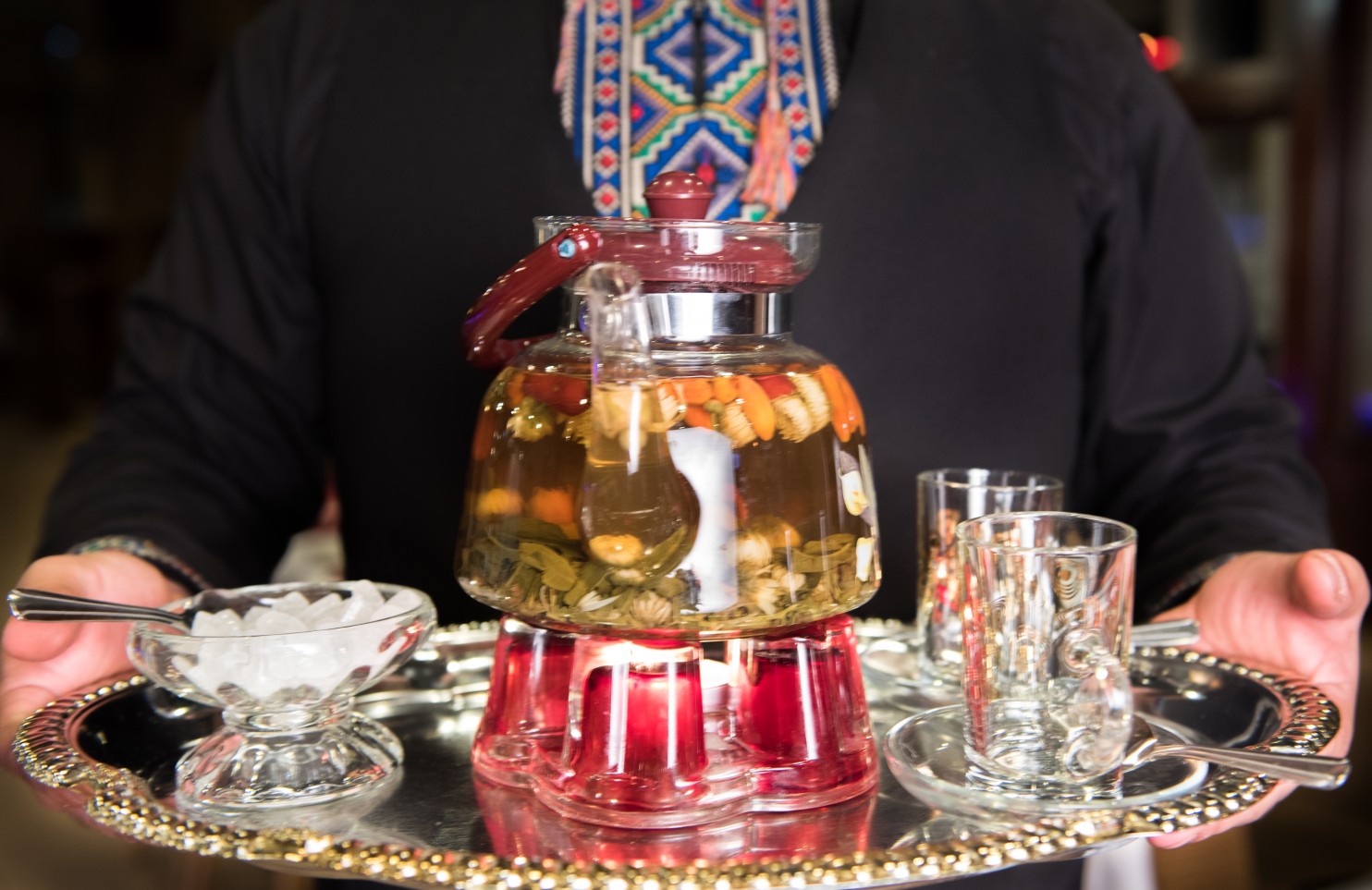
Tea service at Queen Amannisa. Tea is an important part of a Uyghur meal. (Dixie D. Vereen/For The Washington Post)
‘Learn the culture through the food’
Culinary diplomacy has been one way for Uyghurs to bring their political causes to Americans’ attention.
“The back of our business card says, ‘Learn the culture through the food,’ ” said Ekber. “Many people will do research after they have a meal in our restaurant.”
But even though Uyghurs feel more free here, it can be hard for them in America. They worry about the recent wave of Islamophobia and xenophobia under the new administration. And restaurateurs fear speaking out about Uyghur causes, which they say could make the Chinese government retaliate against their relatives in Xinjiang.
“They can put [family members] on a watch list that prevents you from moving around the country. They can confiscate your passport,” said Turkel, an aviation lawyer who does pro-bono immigration work for other Uyghurs.
Uyghur restaurateurs also don’t want to alienate Chinese customers, who are already familiar with their food.
“Chinese [people] hate Uyghurs, but they love Uyghur food,” said Turkel. There are many Uyghur restaurants all over China, because “You can make a decent living, and you probably don’t get the government’s attention. It’s one of the few ways that the Uyghurs can struggle to maintain their national identity.”
Here, Uyghurs want both American and Chinese customers to understand their culture.
“We are not against the Chinese people. We are only against the Chinese government,” said Kokbore. “You can be a restaurant owner and you can also be standing by your political or moral ground.”
So, go to a Uyghur restaurant and ask questions. They’ll likely be answered with a smile, maybe over a perfumey cup of rose tea.
“We’re Uyghur people, and proud to be Uyghur people,” said Maimaiti, who shared his greatest hope: That when he introduces himself to people and shares his ethnicity, “People will say, ‘I know Uyghurs. They have good restaurants.’ ”
Queen Amannisa, 320 23rd Street South, suite 150, Arlington. 703-414-7888. www.queenamannisa.com
Dolan Uyghur, 3518 Connecticut Ave NW. 202-686-3941. dolanuyghur.com
Kiroran, 10728 Fairfax Blvd., Fairfax. 703-865-5033. www.kiroranusa.com
_______________
Polow
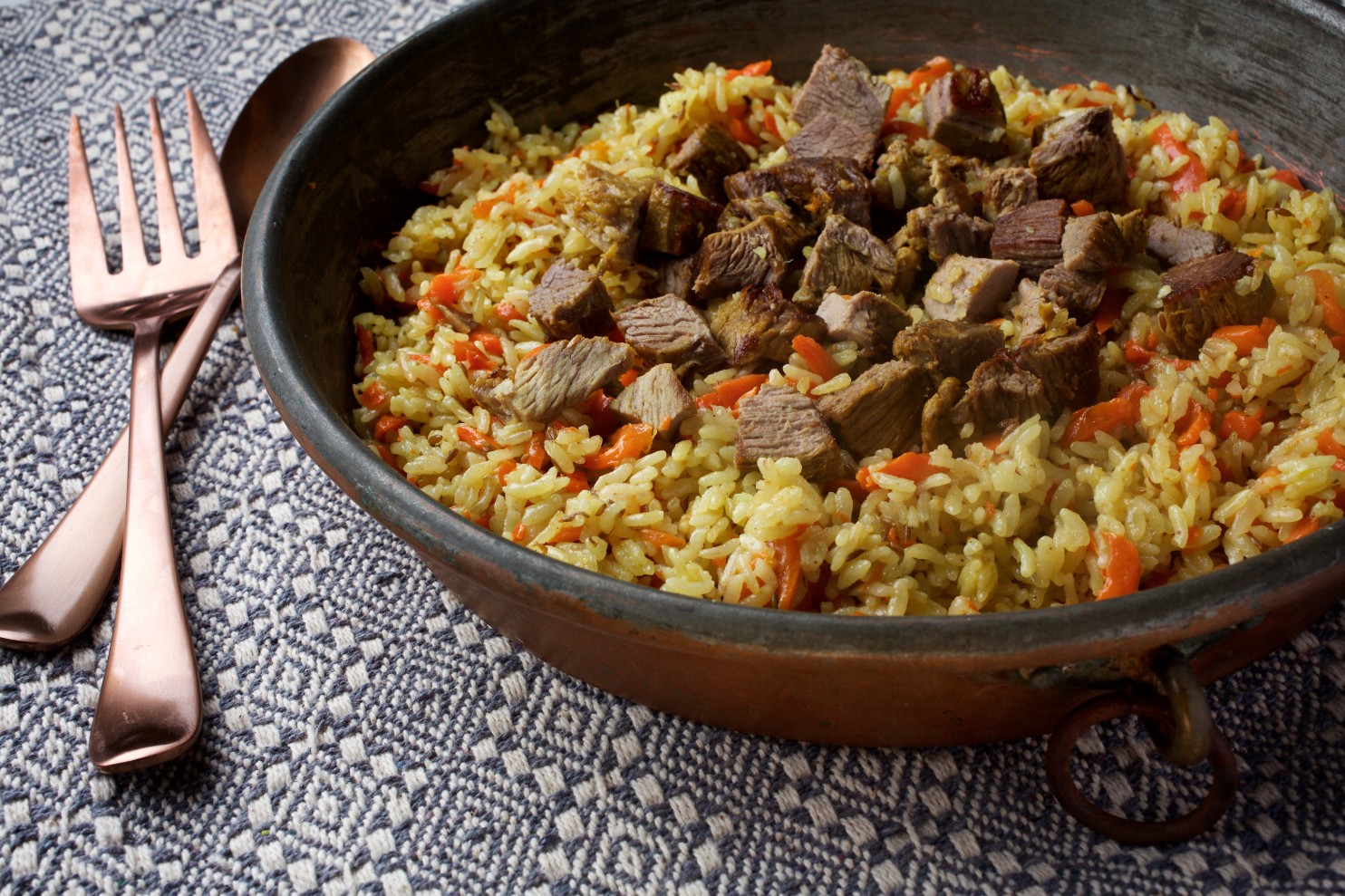
(Deb Lindsey /For The Washington Post)
10 to 12 servings
Pilaf-type dishes are found in many cultures; this simple and hearty version with lamb is widely made in the Uyghur region of China, according to Yimamu Maimati, owner of Queen Amannisa in Crystal City.
The rice is first rinsed and soaked, and then steams atop a bubbling mixture of meat and vegetables. It is also perfumed by cumin seed, which softens and mellows in the process. Cooked chickpeas or peeled apple is sometimes added to the mix.
Serve with a salad of thinly sliced cucumber, onion and tomatoes.
From Patiguli Baikeli and chef Sayit Akhral of Queen Amannisa in Crystal City.
Ingredients
1/3 cup vegetable oil
1 large white onion, sliced
3 pounds boneless leg of lamb, cut into 4 or 5 large pieces (fat not trimmed)
2 1/2 pounds large carrots, cut crosswise on the diagonal, then into 1/2-inch matchsticks
4 cups boiling water
1 teaspoon ground turmeric
1 tablespoon salt
5 1/2 cups medium-grain white rice
1 tablespoon cumin seed
Pomegranate seeds, for garnish (arils; optional)
Steps
Heat the oil in a large, wide, heavy-bottomed pot over medium-high heat. Once the oil shimmers, stir in the onion. Cook for about 6 minutes, stirring a few times, or until some of it begins to get crisped on the edges. Add the meat and sear on all sides, turning the pieces as needed; this will take 8 to 10 minutes.
Add the carrots and stir to coat, then pour in 2 cups of the boiling water and add the turmeric, using a spatula to dislodge any browned bits on the bottom. Give the mixture a good stir; once it’s boiling, add the salt. Make sure the meat is submerged; cook, uncovered, for 30 minutes. The liquid in the pot should be at a steady, low boil.
Meanwhile, place the rice in a large mixing bowl. Cover with cool water and rinse, drain and repeat two more times. Fill with water again, covering the rice by 1/2 inch or so. Let sit for 20 minutes.
Add the remaining 2 cups of boiling water to the pot.
Spread large spoonfuls of the rice carefully over the surface of the what’s in the pot, spreading it evenly for complete coverage; you don’t want the rice to mix into the bubbling liquid at all. (The rice is going to steam atop the meat and vegetables below.) Cook for 5 minutes, then scatter the cumin seed evenly over the rice. Reduce the heat to medium-low; cover tightly and cook, undisturbed, for 30 minutes until the rice is tender.
Uncover; gently stir enough to find all the pieces of meat and transfer them to a cutting board. Stir to incorporate the rice and vegetables; turn off the heat. The grains of rice should not be sticking together.
Cut the meat into 3/4-inch pieces, discarding any fat that hasn’t rendered, if desired.
To serve, divide the meat atop generous portions of the polow. Garnish with pomegranate seeds, if using.
Nutrition | Per serving (based on 12): 710 calories, 27 g protein, 81 g carbohydrates, 30 g fat, 12 g saturated fat, 75 mg cholesterol, 680 mg sodium, 3 g dietary fiber, 5 g sugar
Recipe tested by Bonnie S. Benwick; email questions to food@washpost.com
